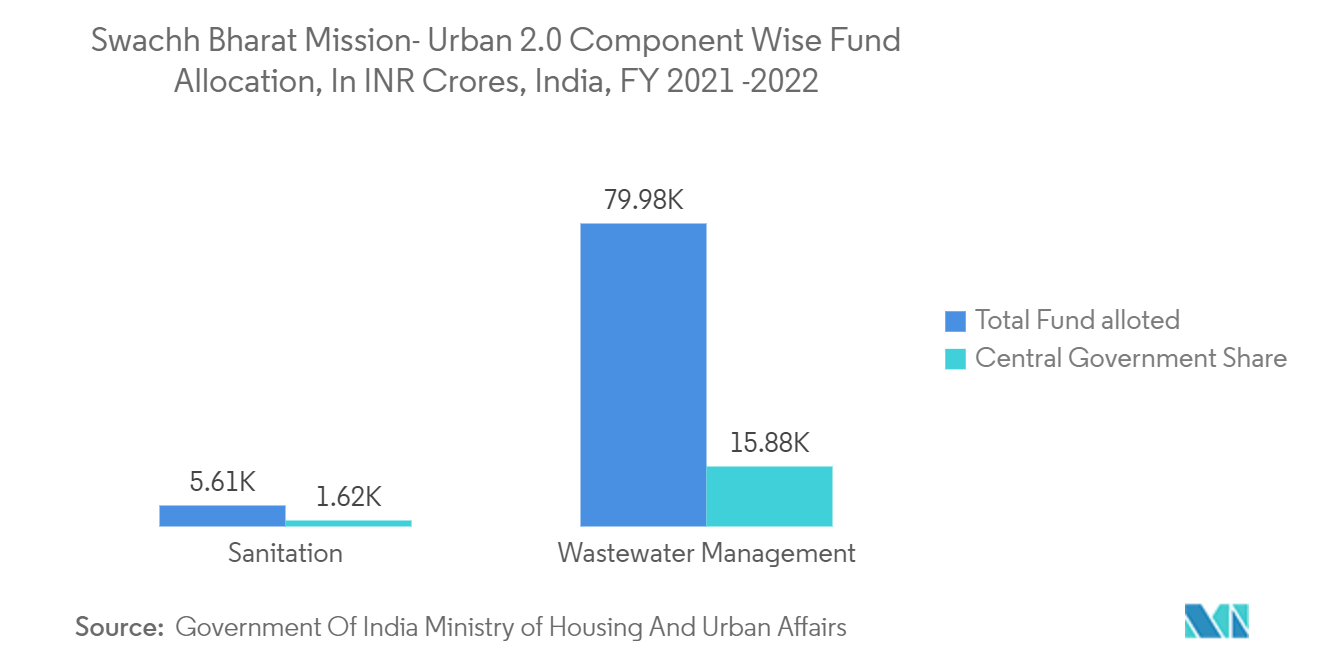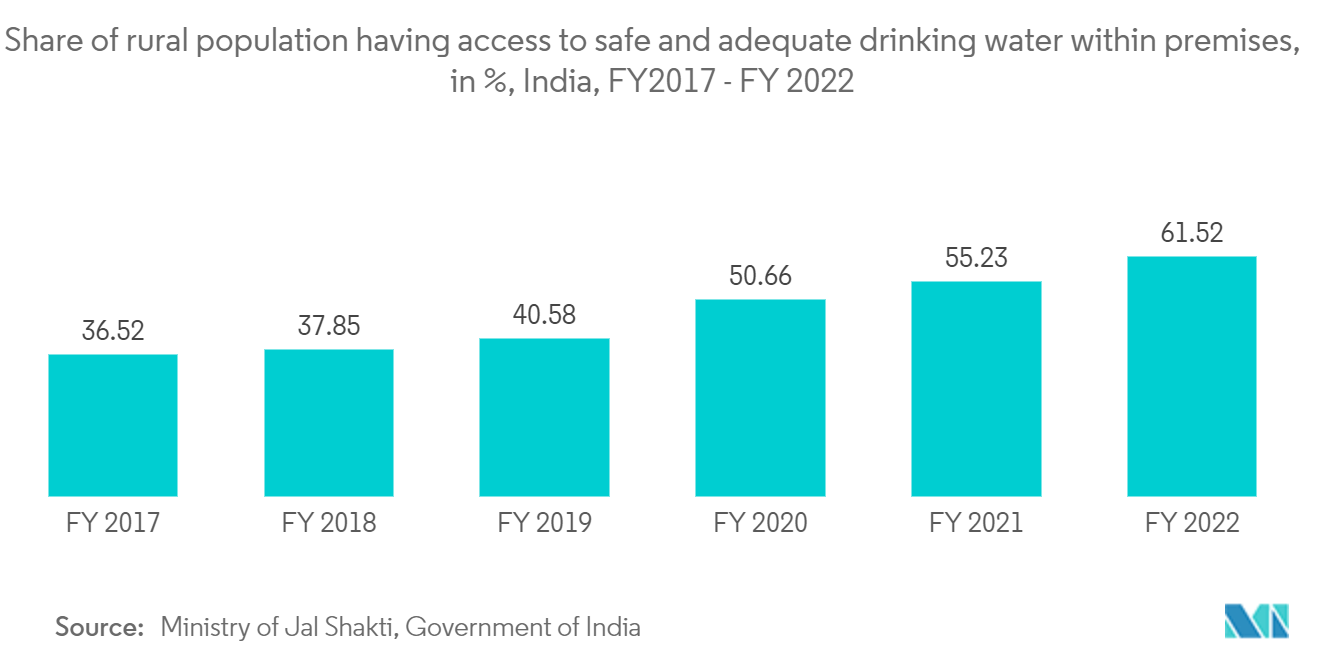Market Trends of India Water And Wastewater Treatment (WWT) Technology Industry
Treatment Equipment to Dominate the Market
- Treatment equipment technology includes oil/water separation, suspended solids removal, dissolved solids removal, biological treatment/nutrient and metals recovery, disinfection/oxidation, and other treatment equipment.
- India is the third-largest producer of coal. Coal production requires plenty of water, and there is a need for extensive wastewater treatment. Clarifiers and disposable filtration equipment are primarily used to treat suspended solids in the Indian mining sector. The COVID-19 pandemic led to mining production and expansion disruptions in 2020, which affected newer equipment adoption for solid treatments.
- According to the Financial Express, by 2030, India's water demand will exceed supply by two times, indicating severe water scarcity in the country. This water shortage for industrial and residential use is expected to increase the need for such water treatment systems in the long run.
- Major end-user industries using anaerobic biological treatment in India include municipal wastewater treatment, food and beverage manufacturing, chemical effluent, and agricultural waste. The growing awareness is driving the demand for anaerobic biological treatment equipment in India.
- In the fiscal year 2021-2022, it is estimated that the total implementation cost of Swachh Bharat Mission-Urban 2.0 for its various components was INR 1,41,600 crores (~USD 18.998 billion). Out of which, the Indian government's share will be INR 36,465 crores (~USD 4.892 billion), while the rest will be from other sources of funds, including CSR from the public/ private sector, external assistance, etc. It includes the fund allocation for water and wastewater treatment in the country.
- India's zinc production has witnessed growth in recent years with increasing consumer demand. According to the Economic Times, India consumes over 850,000-900,000 tons of zinc yearly, with an annual growth rate of 7-8%. However, increasingly stringent environmental regulations on zinc production are estimated to hamper the growth of water treatment technologies in recent times.
- Due to the abovementioned factors, treatment equipment is expected to dominate the market studied.

Municipal Segment to Dominate the Market
- Wastewater treatment is necessary and used across India in different cities. The significant applications of treatment technologies include preliminary treatment, primary and secondary treatment, tertiary treatment, biological nutrient removal (BNR), resource recovery, and energy generation. Municipal wastewater treatment involves a lot of biomass. Therefore, biological treatment is a significant step used to treat biowaste.
- Wastewater technology is primarily used in municipal wastewater treatment by the municipal authority of various cities across India. As per the World Bank, India, along with China, Indonesia, Nigeria, and the United States, will lead the world's urban population surge by 2050.
- Moreover, the municipal water treatment in various municipalities in the country is observing a significant increase owing to government initiatives to provide the more rural population with access to safe and adequate drinking water within their premises.
- According to the Ministry of Jal Shakti of the Government of India, in FY 2022, the percentage of the rural population having access to safe and adequate drinking water within premises increased to 61.52% from 55.23% in FY2021.
- Furthermore, the Indian government is targeting to provide 100% of its population with safe and adequate drinking water within premises by the year 2024 or 2025, which will boost the municipal water treatment plants in the country.
- IDE Technologies, an Israeli firm, joined hands with the government of Andhra Pradesh to set up desalination plants in various states to overcome the water scarcity in the cities.
- To fulfill the scarcity of water, the Council on Energy, Environment, and Water (CEEW), in association with the 2030 Water Resources Group, is planning to improve wastewater management in India, along with increasing private investments to build wastewater treatment plants.
- Over the past few years, the urban sewage capacity in the country growed significantly. This growing capacity will likely drive the country's innovative water treatment technology demand.
- Hence, owing to the abovementioned factors, municipal water, and wastewater treatment technologies will likely dominate the market during the forecast period.

